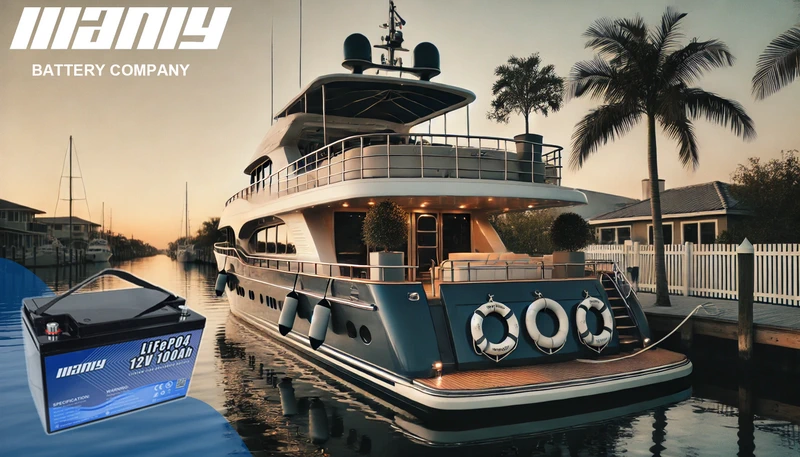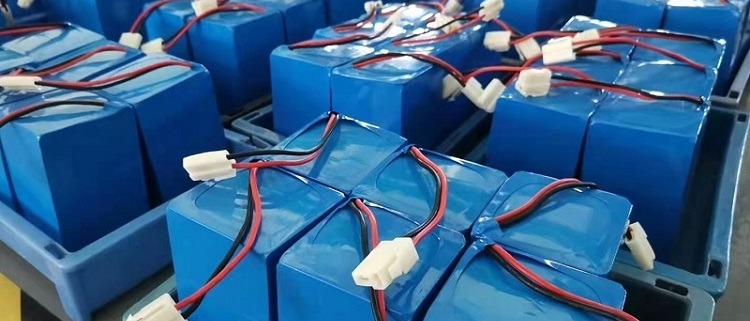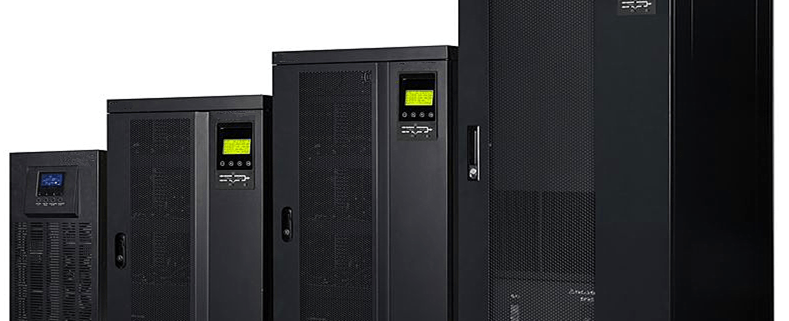What Type of Battery is a Marine Battery? A Detailed Breakdown
Table of Contents
- What Type of Battery is a Marine Battery? A Detailed Breakdown
- What is a Marine Battery?
- Different Types of Marine Batteries and Their Features
- The Best Choice: LiFePO4 Batteries for Marine Use
- Why LiFePO4 Batteries Are the Best Marine Batteries?
- Conclusion
- FAQ
- Hot Search
- What Is A Service Robot
- Australia Customer 500pcs 12v 26ah Solar Street Light Battery Ready For Shipment
- UPS power supply correct use method and maintenance
Maintaining a consistent and dependable boating experience depends on choosing the right marine battery. Whether you use a trolling motor, start your engine, or run electronics, the appropriate battery type will make all the difference. The several choices for batteries make many sailors find it difficult to choose the right one.
This article will break apart lead-acid, AGM, gel, and LiFePO4 batteries as well as other types of marine batteries. You will learn every type in great depth, including its benefits, drawbacks, and optimal uses. By the conclusion, you will understand the reason LiFePO4 batteries are the best fit for marine applications.
What is a Marine Battery?
Designed especially to withstand adverse sea conditions, a marine battery is Unlike automobile batteries, which only provide short bursts of electricity to start an engine, marine batteries must deliver constant power for lengthy durations while tolerating vibrations, dampness, and temperature variations.
- Usually driven by its intended use, marine batteries are categorized:
- The starting battery runs the boat motor. It gives a brief, sharp boost but lacks long-term vitality.
- Deep-cycle batteries run constantly for lights, fish finders, and trolling motors among other equipment.
- A dual-purpose battery sometimes performs worse than dedicated beginning and deep cycle batteries, even if it aims to combine two uses.
These classification indicate the use of a marine battery, although the most important factor influencing battery performance is battery chemistry. Chemistry of a battery determines its general performance, longevity, efficiency, and maintenance requirements.
Different Types of Marine Batteries and Their Features
The several kinds of marine batteries are listed below, together with their characteristics:
Lead-Acid Marine Batteries
Lead-acid batteries have been used in marine conditions as they have been rather competitively priced and widely available for decades. These batteries chemically react with lead plates and sulphuric acid to generate power.
Flooded Lead-Acid (FLA) Batteries
Flooded lead-acid batteries are the most classic form. They demand consistent maintenance, including topped off distilled water. They are heavy, require ventilation, have a shorter lifetime than other battery types even if they are economically priced.
Sealed Lead-Acid Batteries
Lead-acid batteries sealed eliminate maintenance needs and are spill-proof. Two most widely used variants that improve performance over typical flooded lead-acid batteries are AGM (absorbed glass mat) batteries and gel batteries.
Advantages of Lead-Acid Marine Batteries
Lead-acid batteries are reasonably cheap and rather numerous. Their great starting current makes them worth using for engine cranking.
Disadvantages of Lead-Acid Marine Batteries
Lead-acid batteries need regular maintenance, weigh a lot, and charge slowly. Usually running for two to four years, their lifetime is short; they break down upon discharge below 50% capacity.
AGM (Absorbed Glass Mat) Marine Batteries
AGM batteries are spill-proof and maintenance-free by absorbing the electrolyte using fiberglass mats, therefore improving traditional lead-acid designs.
How do AGM Batteries Work?
By immobilising the electrolyte inside the glass mat, AGM batteries reduce the possibility of leaking and hence maximise power efficiency. Since this structure lets for better resistance to vibrations and faster charging periods, AGM batteries are a more durable replacement for flooded lead-acid batteries.
Advantages of AGM Marine Batteries
Zero maintenance and faster charging than other lead-acid models describe AGM batteries. Their lifetime is between three and six years, and they have more resistance to deep discharges.
Disadvantages of AGM Marine Batteries
AGM batteries remain heavier than lithium alternatives even with their superior performance. On a tight budget, they also appeal less to boaters since they cost more than flooded lead-acid batteries.
Gel Marine Batteries
Gel batteries use liquid electrolytes from a silica-based gel. Less leaks and greater deep discharge performance are made possible by this chemical composition.
How do Gel Batteries Work?
The gel-based electrolyte lowers chemical reactions, therefore reducing the possibility of overcharging or deep discharge. Applications needing constant, long-term power will find ideal use for these batteries.
Advantages of Gel Marine Batteries
Gel batteries resist high temperatures, maintain a longer lifetime than flooded lead-acid batteries, and require no maintenance.
Disadvantages of Gel Marine Batteries
The slow charging rate of gel batteries is its biggest drawback. Furthermore expensive than AGM and flooded lead-acid batteries are they are. Less forgiving than other battery kinds, overcharging can damage a battery permanently.
The Best Choice: LiFePO4 Batteries for Marine Use
The most intelligent and powerful marine batteries are LiFePO4 (Lithium Iron Phosphate). Unlike lead-acid batteries, which rely on chemical interactions between lead and acid, they offer constant and dependable power by means of lithium-ion technology.
Why LiFePO4 Batteries are Superior?
Among their most important benefits are LiFePO4 batteries’ extended lifespan. Lead-acid batteries run two to six years; LiFePO4 batteries can run ten years or more. Since they weigh up to 70% less than lead-acid batteries and are more easily handled, they also greatly improve boat performance.
Charging time offers still another major advantage. Five times faster charging of LiFePO4 batteries than with lead-acid batteries Unlike lead-acid batteries, which have to be kept above 50% charge, they also enable total discharges free from battery damage.
Are There Any Drawbacks to LiFePO4 Batteries?
The sole negative of LiFePO4 batteries is their starting cost. For seasoned sailors, however, they are the most affordable choice because of their long lifetime, fast charge times, and low maintenance needs.
Why LiFePO4 Batteries Are the Best Marine Batteries?
LiFePO4 batteries have long-term benefits above all other battery models, even if their initial expense makes many sailors unwilling to switch. Boats carrying LiFePO4 batteries had 30% longer running lifetime on electronic systems and trolling motors, according a study by marine engineers.
Savings in weight also improve performance. LiFePO4 technology lets a boat greatly reduce the weight of its battery, therefore enhancing fuel economy and general maneuverability. Boaters looking for dependability, fast charging, and long-lasting performance would best invest in LiFePO4 batteries.
Conclusion
The perfect sailing voyage depends on selecting the right marine battery. Though lead-acid, AGM, and gel batteries are still somewhat popular, none give the efficiency, lifetime, and long-term savings LiFePO4 batteries offer.
LiFePO4 batteries from MANLY Battery provide the finest answer if you want a dependable and high-performance marine battery. Their innovative lithium technology guarantees exceptional energy economy, therefore assuring that your boat keeps running without the trouble of regular replacements.
For premium-quality marine batteries, visit MANLY Battery today and experience the next generation of marine power solutions.
FAQ
1. Is a deep cycle battery the same as a marine battery?
Let’s clarify: a deep cycle battery and a marine battery aren’t the same, although they have similarities. Here’s why:
A deep cycle battery provides a steady power flow over an extended period. It’s designed for applications that need consistent energy, like golf carts, RVs, or renewable energy systems. These batteries are built to handle repeated discharges and recharges without losing performance.
On the other hand, a marine battery is specifically made for boats. However, marine batteries come in two types: starting and deep cycle. A starting battery delivers a quick surge of power to start the engine, while a deep cycle marine battery powers your boat’s electronics and other devices.
So, while some marine batteries are deep cycle, not all deep cycle batteries work as marine batteries. If you’re choosing a battery for your boat, ensure it’s designed for marine use to get the most reliable power.
2. What are the three types of marine batteries?
Marine batteries come in three main types, each serving a different purpose. Understanding their roles helps you pick the right one for your boat:
- Starting Batteries: Starting batteries provide a quick burst of power to start your engine. They’re all about delivering a high-energy jolt for a short time. These batteries are not designed to power other devices, so they focus only on getting your engine running.
- Deep Cycle Batteries: Need power for your boat’s electronics, trolling motor, or other accessories? Deep cycle batteries are your answer. They deliver steady, long-lasting energy and can discharge and recharge multiple times without losing capacity. Perfect for extended trips or when you’re off the grid!
- Dual Purpose Batteries: As the name suggests, dual purpose batteries combine the functions of both starting and deep cycle batteries. They give you enough power to start your engine and supply energy to your accessories. They offer versatility but may not provide as much power as a dedicated starting or deep cycle battery.
Hot Search
Marine Lithium Battery Battery Manufacturer
Hello
A robot is a machine device that automatically performs work. It can accept human commands, run pre-arranged programs, or act according to principles established by artificial intelligence technology. According to the classification of International Federation of Robotics (International Federation of Robotics), robots are generally divided into industrial robots and service robots.
Service robots refer to equipment that is used in non-industrial production, has a semi-autonomous or fully autonomous working mode, and can provide beneficial services to humans in an unstructured environment.
Compared with industrial robots, service robots are closer to downstream end consumers, so the customer base of service robots is wider. Being closer to the end consumer makes the service robot possess the attributes of durable consumer goods such as electronics and home appliances. At present, service robots are mainly engaged in maintenance, repair, transportation, cleaning, security, rescue, monitoring, etc., with a wide range of applications.
Australia customer 500pcs 12v 26ah solar street light battery,ready for shipment.
This batch of 12v 26ah solar battery is used in the solar street light project .
The customer has more than 5 years of production, research and development, and sales experience in the solar street light industry.
If you have any 12v 26ah solar battery is used in the solar street light projects , please don’t hesitate to call MANLY here or email at info@batterytest.sitecoming.site.
The use and maintenance of UPS power supply should follow the following 10 points:
1. Correct switch sequence
In order to avoid damage to the UPS caused by the inrush current generated by the load at the moment of start-up, the UPS should be supplied with power first to make it in the bypass state, and then the loads should be turned on one by one, so as to avoid the impact of the load current on the UPS. The service life of UPS is extended. The shutdown sequence can be regarded as the reverse process of the startup sequence. First, turn off the loads one by one, and then turn off the UPS.
2. Precautions before starting up
Before turning on the machine, first confirm whether the polarity of the input mains connection is correct to ensure personal safety. Note that the total power of the load cannot be greater than the rated power of the UPS. The UPS should be prevented from working in an overload state to ensure that the UPS can work normally.
3. Precautions after shutdown
After the mains power is interrupted, the Golden Samurai UPS is not powered by the battery pack and automatically shuts down. When the mains power is abnormal and turns to the UPS battery pack, the load should be shut down and shut down in time, and then the mains power is restored to normal.
4. Use environment requirements
The temperature of the UPS power supply environment must be 0-40°C, relative humidity 30%-90%, and altitude <1000 meters. If the temperature is lower than 0℃ or damp, the insulation performance of the UPS power supply will be reduced, which may easily cause a short circuit; at the same time, it may also cause corrosion and rust of the UPS power supply and other equipment connectors, electrical connection screws, component pins, hoes, solder joints, etc. . In addition, the antimagnetic ability of UPS is not very good. Therefore, strong magnetic objects should not be placed on the UPS, otherwise it will cause the UPS to work abnormally or damage the machine.
5. Battery maintenance
UPS battery packs will have self-discharge. If they are left unused for a long time, the battery packs will be damaged. Therefore, it needs to be charged and discharged regularly. If you are using a maintenance-free absorption electrolyte system battery, it will not produce any gas during normal use, but if the user uses improperly and causes the battery pack to overcharge, it will generate gas and increase the internal pressure of the battery pack. In severe cases, the battery will swell, deform, leak or even rupture. If the user finds this phenomenon, he should immediately replace the battery pack.
6. Be safe
Due to the high voltage of the UPS battery pack, there is a certain risk of electric shock to the human body. Therefore, when loading and unloading the conductive connecting strip and the output line, there should be safety guarantees, and the tools used should be insulated, especially the output contacts should be equipped to prevent electric shock.
7. Charging voltage
In the UPS charging process, if the charging voltage is too high, it will cause overcharging of the battery pack, and vice versa, it will cause the battery pack to undercharge. When the charging voltage is abnormal, it may cause errors in the battery configuration data. Therefore, when installing the battery pack, you must pay attention to the correctness of the battery specifications and quantity. Different specifications and different brands of batteries should be avoided as much as possible, and it is best not to use low-cost and inferior products for external chargers.
8. Charging current
Similar to the voltage requirements of UPS, excessive current should be avoided when charging and discharging the UPS battery pack. Although sometimes the UPS battery pack can accept a certain level of high current, it should be avoided as much as possible in actual operation. Otherwise, the battery plate will be deformed and the internal resistance of the battery will increase. In severe cases, the battery capacity will be severely reduced. As a result, the life of the battery pack is greatly shortened.
9. Depth of discharge
The depth of discharge of the UPS has a great impact on the battery life. The deeper the battery discharge depth, the fewer the number of cycles it will use. Therefore, avoid deep discharge of the battery during use. Although some brands of UPS have a discharge protection function, if the UPS is in a light-load discharge or no-load discharge, the battery will be deeply discharged, which will affect the service life of the battery pack.
10. Load size
Ordinary users will think that the greater the load capacity of the UPS, the better the protection effect of the computer, so they choose high-priced and high-load capacity products when purchasing. In actual application, the user’s load is only 30% or less of the UPS rating. In fact, this will also affect the life of the UPS. After all, the internal battery pack often cannot work properly. Of course, it does not mean that 100% of the rated load is the best. If so, any minor problems in the UPS will cause great damage. Actual operation shows that it is best to choose a load of 50% to 80%.







